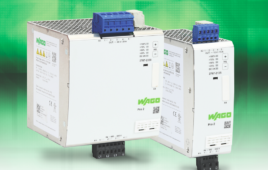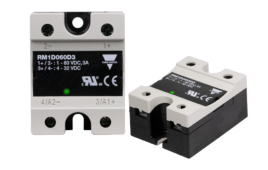Pepperl+Fuchs has expanded its family of ML4.2 Series Subminiature Photoelectric Sensors. A number of new models are available to help maximize machine productivity by delivering faster response times, multibeam redundant detection, independent outputs and zero deadband sensing, among other significant benefits.

ML4.2 dual sensor redundant detection models feature dual light beams from two emitter LEDs that reflect light to two receivers. These beams act as a logic “OR” so that either beam can switch the output. Having a redundant light beam enables transparent or glossy objects that are foil or plastic-wrapped to be much more reliably sensed when compared with single beam sensing.
An ML4.2 model with dual sensor redundant detection and independent outputs features dual beams from two emitter LEDs that reflect light to two receivers, where two independent outputs indicate the state of each separate beam.
Two precise sensing models are also now available to deliver the sharpest sensing distance cut-off and smallest switching hysteresis on the market for background suppression sensors. The first model is available with a visible red emitter, and senses black and white color extremes within an extremely tight sensing window. A black test object is sensed up to 20 mm from the sensor, a white test object is sensed up to 21 mm away and no targets are detected at or beyond 22 mm. In contrast, a standard version ML4.2 sensor enables background suppression at 25 mm from the sensor. A second model senses black to 40 mm, white to 43 mm and no objects at or beyond 43 mm.
A new ML4.2 series retroreflective sensing model with no sensing deadband is used with a corner-cube reflector and is polarized so that shiny objects will not be erroneously seen as the reflector. An innovative single optical axis design eliminates sensing deadband. A second model also includes an output that monitors signal strength.
Lastly, new ML4.2 series thru-beam sensors deliver maximum signal strength in situations where retroreflective and background suppression models do not have sufficient optical power. They feature an optical alignment aid to indicate marginal signal strength, a status LED to indicate if small objects are not detected at high speeds, and quadruple the speed of previous generation thru-beam sensors. They are ideally suited for applications with sensing distances up to at least 8 meters, and in dirtier environments.
All non-thru-beam ML4.2 series sensors feature integrated crosstalk immunity to eliminate concern for side-by-side mounting, a tamperproof design with no external adjustments, 4-in-1 output to reduce inventory requirements and wiring hassles, and superior immunity to ambient light even for high frequency energy-saving lights. They also feature diagnostic LEDs in the front and back of the housing for quick and easy status indication, an antistatic and scratch-resistant glass lens ideal for printing and paper environments, and metal reinforced mounting holes that provide robust operation in demanding industrial applications.
Pepperl+Fuchs
www.pepperl-fuchs.us
Filed Under: SENSORS, TEST & MEASUREMENT, ELECTRONICS • ELECTRICAL





Tell Us What You Think!